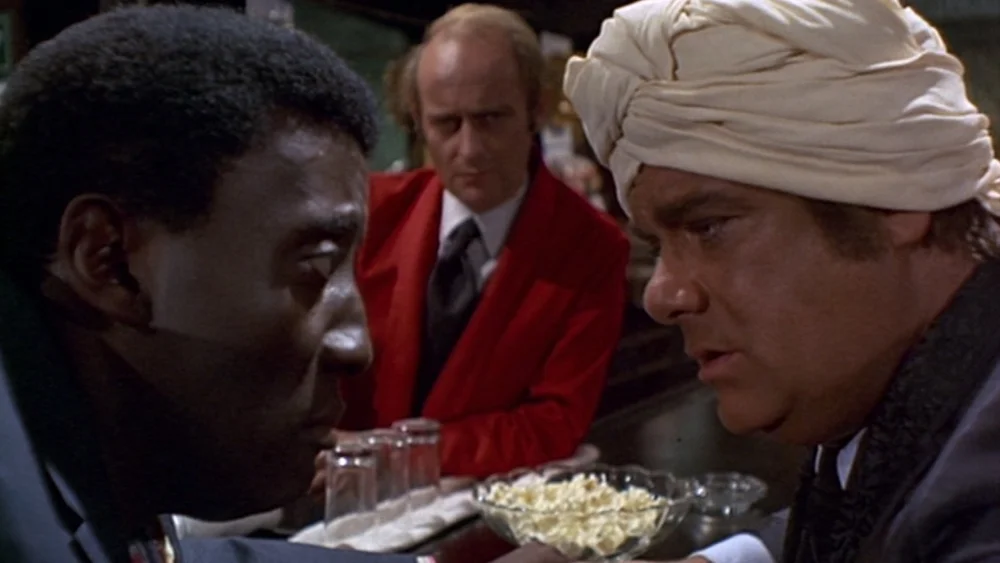
A few years after Rod Serling’s The Twilight Zone series came to an end, the creator launched a new anthology series titled Night Gallery, which was a great Twilight Zone follow-up show! Night Gallery launched with a TV movie in 1969 and it consisted of three separate episodes directed by Boris Sagal, Barry Shear, and a young up-and-coming filmmaker named Steven Spielberg.
Night Gallery was Spielberg’s first professional directing gig and the segment he was given to helm was titled "Eyes," which starred Joan Crawford. The story followed a gambler who owed money to loan sharks and he agreed to donate his eyes to a woman for the $9,000. She ends up blackmailing her doctor into performing the illegal transplant, and he warns her that her vision will only last for about eleven hours. As she removes her bandages following the surgery, there is a blackout in her apartment.
The Night Gallery movie was a success, and because everyone loved what Spielberg did with his segment, he was brought back on board to direct another segment for the series, but this experience didn’t turn out the way he thought it would.
Spielberg was looking to flex his creative talents and do something different, something a little more artistic. The segment was is titled "Make Me Laugh," and it told the story of a failing comedian (Godfrey Cambridge) who would give anything just to make people laugh. By chance, he runs into a self-described “miracle guru” (Jackie Vernon) who reluctantly grants him his wish after his pleas for caution fall on deaf ears. The big twist is that the comedian is constantly laughed at, even when he’s not performing. No one will ever take him seriously.
The way Spielberg directed the episode was in one long, unbroken take, and this is something that the producers were not happy with. In fact, they were appalled by it! During a recent interview with Stephen Colbert, Spielberg recounts the experience and how he was able to shoot the project exactly the way he wanted, but it’s not what the executives were hoping for.
"I came on the set, and because it was only 11 minutes long I had this idea of shooting the whole 11 minutes in one shot. But, I staged the whole thing across four sets in one shot. Storyboarded it, rehearsed it, everybody was excited about it, and then when the executives sat down to watch the rushes the next day they saw the entire 10-minute take of most of the show. And they were appalled."
It’s not the subject matter they were appalled at, I mean, the script was written by Rod Serling himself. It was Spielberg's storytelling style. They didn’t like that Spielberg was trying to do something different and think outside of the box. He was thinking of shooting the segment in a cinematic way, not the way TV shows were being shot in that era and the producers wanted him to color inside the lines. Spielberg went on to talk about the complaints made, saying:
"[They said] 'Where's the close-up coverage, where's the over-the-shoulder shots, where are the prerequisites for making it look like a television show?' And I immediately got a call from an executive, I won't mention that person's name, who said, 'We're appalled by what we see. That's one of the most irresponsible experiences I've ever had with a director working for me, and we're going to reshoot the show with another director.' And that was the end of it. I wish I had a copy of that shot. It was a terrific shot! But, I don't have a copy of it."
I would love to know who that executive was! I wonder what Serling thought of it! I wonder if he was one of the appalled executives or if he liked what Spielberg delivered.
Spielberg is still credited as the director of "Make Me Laugh," but I can’t find anywhere if someone else helmed the episode as it was released. It definitely wasn’t Spielberg’s original version of the segment.
The following year, in 1971, Spielberg went on to direct his first feature-length TV film project Duel. The rest is history.
إرسال تعليق